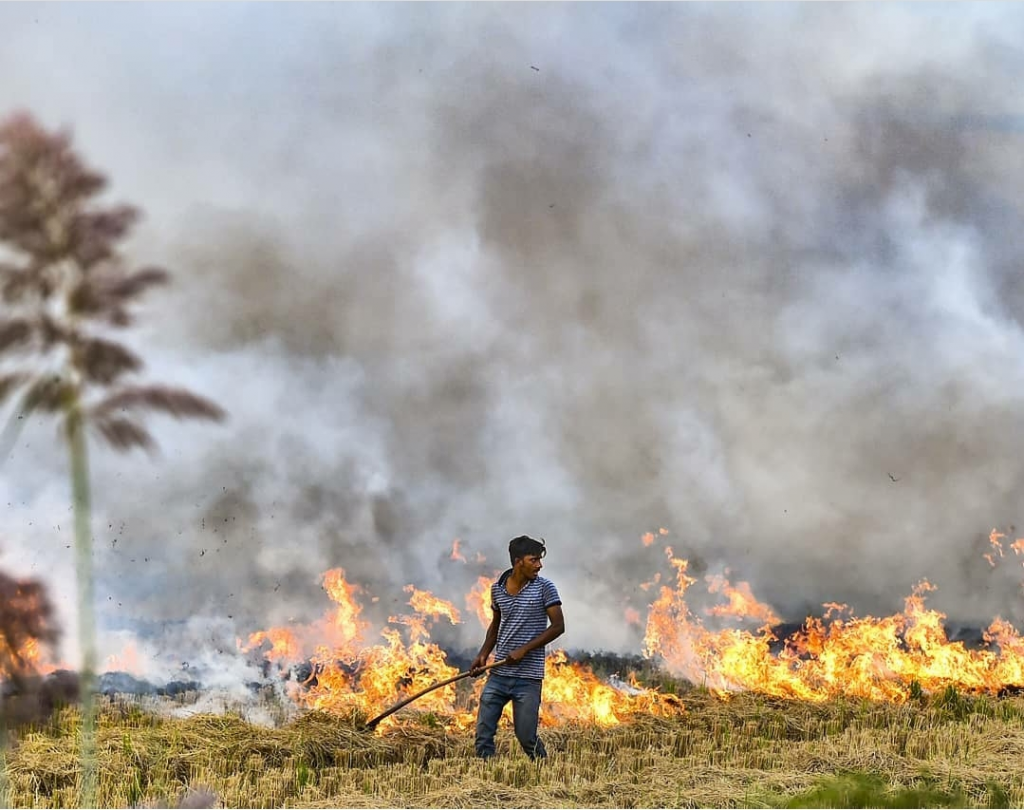Author: Arinder Kaur .
About my Community

Taj Mahal is also one of the beautiful places in the Indian community, which is a symbol of love. Shah Jahan made this place for his loving wife Mumtaz. Everyone likes to go there to see the beauty of this place. Taj Mahal changes the color by itself according to the sunlight.

In this picture, I want to tell you about religions. There are many religions in India and out of those one is Sikh. The name of this is the Golden Temple. I showed the picture of the Sikh temple, which is one of the important parts of the Indian community. People of India love to go to a Sikh temple, and they believe to start any work by getting a blessing from God. Most of the visitors, prefer to go to this Sikh temple because this is a sign of togetherness and truth. also, it has four doors which stand for that there is no discrimination among individuals.

In this picture, I want to describe the culture which is called Bhangra and Giddha. Which people use to in their festivals and celebrations and you can also see in this picture, there are some girls doing a dance which they are showing by giving the performance.
This is a picture of agriculture which is one of the main work of farmers. Farmers are doing the hardest work in their fields and there are lots of people who are doing work in fields.
Burning of stubble in field

India is the land of culture and famous for its religious diversity, one more thing that India is known for farming all over the world. Farmers are also known as “Grain God” in India but the practices that farmers use nowadays are very hazardous for the environment. A farmer’s interest in stubble burning has increased in the past few years. What is stubble burning? When farmers burn the agricultural residues to prepare the land for the next cultivation, that practice is called stubble burning or crop residues burning. Environmentalists believe that this fire is extremely dangerous for the environment and should be stopped. But the farmers have a different viewpoint on this issue. They have stated that they do not have any other option than this. Both views collide with each other with respect to this issue. But there are some reasons why this method still practiced in India It actually makes the land ready for another crop. Once I interviewed a farmer to know more about the facts that we are not known to. I came to know that farmers face difficulties while collecting remaining straw from their fields. It consumes lots of resources and time so they choose to burn the stubble.
To commence with, there are many effects of burning stubble such as there is the release of carbon monoxide from the fire which leads to the ample of problems like global warming, poor quality of air in the surroundings, and also the cause of asthma to the old age people. When the crop residue burnt in Punjab and Haryana(states of India), it makes the air quality worse in Delhi, and at the time of the burning of crop residue leads to an increase in asthma cases in Delhi. Moreover, the carbon monoxide released from that activity is also responsible for the depletion of ozone which results in ultraviolet light come to earth and may cause problems like skin cancer. Furthermore, it does not impact just humans, when farmers burn the stubble it also killed the insects and reptiles who reside under the ground which ultimately results in a disturbance in the ecosystem and can also disturb the food chain.
There are ample reasons, which compel farmers to burn stubble from their fields. Firstly, the farmers of India use a ‘combine harvester’ to cut the crops but that machine does not collect the remaining straw, it leaves waste in the field, which is being burnt by farmers. But the ministry is not satisfied with this and provides farmers other alternatives that are the use of ‘mulch’ and ‘happy seeder’. Mulch collects the paddy, cuts the straw, and spreads it evenly around the field. After this, they use a ‘happy seeder’ to grow the wheat, as this machine cuts and lifts the remaining stubble and drills the wheat into the soil. The use of these machines is not possible as they are awfully expensive and even time-consuming. Material like stubble is hard to shift from one place to another as it requires a lot of energy and even gas and farmers in India do not have much income to afford these machines. To solve this problem, the government provides subsidies to those farmers who want to purchase these machines but meanwhile they also increase the rate of the machines and the situation remains unsolved. If we think about the situation of the officials, they cannot afford such expensive machines for all the farmers, this will adversely affect the economy of the country. When the administration has not seen any other alternative to sort out the problem of stubble, they claim the penalty of Rs.2500(CAD 50) over the burning stubble, and farmers also have no other option to clear stubble from their field. So, for them, the penalty is cheaper than following the way that the management wants them to do.
One more interesting point in this essay is that farmers ignore air pollution but why they do not think about soil pollution as it is their soil where they are sowing their crops. I asked the question to my uncle that if you burn your fields it decreases the fertility of soil as well as ‘farmer friends’ also die due to burning stubble. Then he said to me “ I know that we burn the earthworms which helps us in the growth of plants and increase the yield, but we have other alternatives such as manure which grows them again and we also use some other chemical fertilizers to increase the production of crops”. So here, they just ignore the effects on the environment due to burning stubble.
In conclusion, I believe that as the roots of this problem is deep but it can be resolved by the contribution of both farmers and the ministry, like the officials can buy those machines and can give to farmers on low rent. So, the farmers do not burn the stubble and the government also can earn some revenue from it. Moreover, the authority should introduce such a policy that is in the support of farmers as well as lucrative for farmers. So, with the help of new policies, farmers can easily enhance their business level. Owing to this, farmers do not burn the stubble. Furthermore, the administration should increase the price of crops so, that farmers can earn more and afford the new technological machines. By performing, all these methods, we can easily overcome this issue.
Nowadays stubble burning is rapidly increasing its contribution to air pollution. Human are the primary source of burning and even biomass burning is producing many greenhouse gases in the environment. As farmers use harvester in their field so it left some residue behind (stubble) and burning stubble is the most beneficial way for farmers. In India and China, stubble burning is practiced the most and produces 84.0Tg and 110.0Tg (Streets et al., 20039). This leads to various health issues and harmfully affects the environmental in those regions. The stubble of rice crop impacts the environment more because of the large number of pollutants (RSPM, nitrogen oxides, and sulfur oxide).
Remote sensing is the way to collect them from inaccessible areas and this technology has been improved in the last few years (Escuin et al., 2008; Murphy et al., 2008; Pradhan, 2001). When the stubble burnt, it left a black mark on a field behind and that black mark has been used to identify the regions of burning by Satellite imaging.
In Punjab, two districts named Patiala and Ludhiana are the major rice produces. A study was conducted, which concluded that the stubble was 1.5 times greater than the rice produced. So, farmers left with a single option to burn stubble which leads to a huge number of pollutants (Gupta and Sahai, 2004). This discharge of toxic waste deteriorates the atmosphere, human health too. “The emission of pollutants from stubble burning depends on the composition, soil moisture condition, stubble moisture content, and ambient conditions i.e., wind speed and temperature”(Jenkins et al., 1996). In India, the burning of stubble takes place in the months of April to May and October to November of wheat and rice, respectively. The rice stubble produces more pollutants than wheat one and the festive season is also coming in the month of October and November. Therefore, along with stubble burning, people burnout crackers in festivals, which increment the number of pollutants in the air. The emission of pollutants affects the local people most (Pratika Chawala). Pollutants also tend to travel beside with wind direction (Pratika Chawala). Overall, it is focused that the main reason behind this main issue is rice stubble. The out limit of these pollutants dropped the National Ambient Air Quality Standard. In this study, A very small change had been noticed in the air pollution in Patiala and Ludhiana between the years 2014 and 2018. So, further strategies and achievable solutions should be implemented.
Works Cited
Chawala, Pratika, and H. A. S. Sandhu. “Stubble Burn Area Estimation and Its Impact on Ambient Air Quality of Patiala & Ludhiana District, Punjab, India.” Heliyon, vol. 6, no. 1, Jan. 2020. EBSCOhost, doi:10.1016/j.heliyon.2019.e03095.
